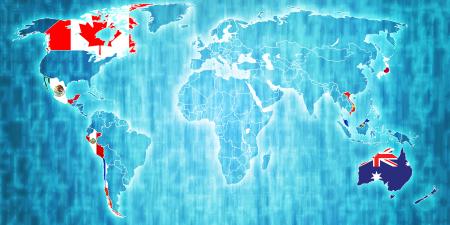Abstract
In 2010, the nation of Haiti was leveled by a shattering earthquake that killed thousands and devastated its already fragile infrastructure. During relief efforts to aid Haiti’s suffering population, the United Nations sent troops to Haiti to assist the rebuilding of country’s most basic services. But those troops unknowingly carried with them the bacteria that cause cholera, and through the UN’s negligent actions, it triggered a horrifying cholera epidemic that continues to harm the Haitian people. Those injured by the cholera epidemic have sought relief in the US federal court system to obtain justice for those killed or sickened by the cholera outbreak. The UN has declared legal immunity for causing the epidemic, yet the litigation on this matter is ongoing.
Introduction
On January 12, 2010, a devastating earthquake struck the island nation of Haiti. The seismic event and its aftermath killed more than 200,000 people [1], displaced close to 1.5 million residents [2], and left the poverty-stricken country in an even more precarious state. And another catastrophe would soon bear down on the Haitian people. In October 2010, Haitian health officials found an unusually high number of cases in which people presented symptoms of acute diarrhea, vomiting, and severe dehydration in two different regions of Haiti [3]. Stool samples from symptomatic patients confirmed the presence of Vibrio cholerae, the bacterium that causes cholera [4]. Within a few weeks, new cases of cholera were found in other parts of the country, including the capital, Port-au-Prince [5]. By the end of November 2010, every region of Haiti had positive cases of cholera; over 16,000 Haitians had been hospitalized with acute diarrhea and over 900 were dead from the disease [6].
The cholera epidemic in Haiti is still ongoing. Over the course of nearly six years of the outbreak, it has been estimated that more than 9,200 people died from the disease, with more than 770,000 Haitians having been infected [7]. Historical records indicate that, prior to this epidemic, cholera had not been present in Haiti for at least 150 years [4], which gave impetus to several independent investigations seeking to unearth what caused this public health crisis. All of the studies that have been conducted point to the same source: peacekeeping troops deployed by the United Nations (UN) to a UN base in Haiti.
Although systematic failures in establishing a UN peacekeeping base in Haiti is the culprit behind the Haitian cholera epidemic, as will be explained below, calls from the international community that the UN quickly address and rectify the damage caused by the epidemic have garnered little response from the intergovernmental organization. Advocates seeking just compensation for victims of the epidemic, as well as humanitarians, have taken to the courts as a means by which to hold the UN accountable for its negligence in failing to screen UN peacekeeping troops for cholera and failing to enact proper sanitation practices. This article will discuss the tricky legal challenge that exists in charging one of the most prominent humanitarian organizations in the world with dereliction of its duties.
The United Nations—the Proximate Cause of the Haitian Cholera Epidemic
Since the early 1990s, the UN has deployed several peacekeeping and humanitarian missions to Haiti in order to address political unrest and socioeconomic instability [8]. In 2004, following the removal of Haiti’s president during a contentious political struggle, the UN established the UN Stabilization Mission in Haiti (MINUSTAH) to provide a military presence, oversee civilian affairs, and offer humanitarian and development assistance [6]. During the 2010 earthquake, MINUSTAH troops played key roles in the immediate response to the disaster as well as in long-term humanitarian efforts, including clearing debris, rebuilding local infrastructure, leading security assessments, and ensuring that the rule of law and administration of justice were being carried out [6]. But between October 8 and 21, 2010, a battalion of Nepalese MINUSTAH troops arrived in Haiti to provide further support for ongoing earthquake relief efforts [6], and it is during this timeframe that the first cases of cholera began to appear.
Considerable evidence from several investigations points to the Nepalese troops as the source of the disease. Epidemiological studies have shown that the Nepalese troops sent to MINUSTAH had been exposed to cholera while training in Nepal, likely during an outbreak of the disease in the Kathmandu Valley [9]. Cholera is endemic in Nepal, and although medical examinations revealed no reported symptoms among the troops, the bacteria can be carried asymptomatically, and none of the troops were tested specifically for V. cholerae before leaving for Haiti [10]. More tellingly, epidemiological research on the Haitian cholera epidemic has repeatedly shown that the V. cholerae strain in Haiti is closely related to the bacteria strains from Southeast Asia [3]. Different specimen samples from the Haitian cholera outbreak have pointed to a common genetic source, and genetic sequencing of the Haitian bacteria has demonstrated that it is nearly identical in its genetic makeup to the V. cholerae strain that was found in Nepal during the summer of 2010 [3].
Moreover, analyses of the cholera outbreak reveal that the epidemic originated in the area of Méyè where the Nepalese troops were stationed, near the MINUSTAH base [11], where poor sanitation measures acted as a catalyst. The MINUSTAH base is located near the Méyè Tributary, a waterway that then flows into the Artibonite River—the largest river in Haiti and one of the main water sources used by Haitians for drinking, bathing, and cooking [6]. Even before the outbreak had begun, local residents complained that the UN was dumping sewage into the river, and reporters visiting the base in the throes of the outbreak described seeing an overflowing sewage tank and a dark foul-smelling liquid pouring from a pipe into the river [12]. An environmental survey conducted by a UN independent panel of experts found the MINUSTAH base to have an inadequate waste infrastructure that allowed for a “significant potential for cross-contamination” because of poor pipe connections, broken pipes, and a faulty waste disposal system wherein water contaminated with fecal material was dumped into a septic pit near the Méyè Tributary [11]. By giving Nepalese MINUSTAH troops entry into Haiti without screening and treating them for cholera, the UN allowed a dangerous contagion to be introduced into an impoverished and vulnerable nation. Furthermore, the reckless construction of the MINUSTAH base sanitation and waste disposal systems, together with the UN’s failure to address these systemic breakdowns, fueled the proliferation of a deadly cholera outbreak that was entirely preventable.
Response by the United Nations
The UN’s willingness to take responsibility for the Haitian cholera epidemic and to help with further relief efforts has been poor. Although the UN’s culpability has been confirmed through scientific studies [9], expert reports [3], and the very investigation that was commissioned by the Secretary-General of the UN [11], the organization has denied any role in starting the epidemic [13]. In response to advocacy groups seeking compensation for victims of the cholera outbreak and demands that the UN establish and fund a nationwide program to properly address the outbreak and prevent further destruction, the UN has stated that the outbreak was “caused by a confluence of circumstances and was not the fault of, or deliberate action of, a group or individual” [14]. Furthermore, the UN will not review the legal claims of injured Haitians because “consideration of these claims would necessarily include a review of political and policy matters” [14]. This stance means that the UN considers the roles the MINUSTAH peacekeepers and the base played in contaminating the waterways and the troops’ negligent actions to be a matter of public policy instead of an actionable legal claim under tort law and, therefore, outside the duties owed by the UN to the Haitian people [15]. Although the UN has launched the Initiative for Elimination of Cholera in Haiti—a $2.27 billion plan to address the epidemic in partnership with the Centers for Disease Control and Prevention, the World Health Organization, and other bodies—the UN has only committed to providing $23.5 million, or less than 1 percent of the needed funding [6]. Given the UN’s refusal to concede its role in the Haitian cholera outbreak, Haitians sickened during the outbreak and the families of those who died have taken to the federal courts in the United States to seek justice from the UN.
Federal District Court
On October 9, 2013, a class action lawsuit was brought by five named plaintiffs—Haitian and US citizens—against the UN, MINUSTAH, the Secretary-General of the UN, and the former Under Secretary-General of MINUSTAH. The case was brought in US federal district court in New York because the UN is headquartered in New York State [16].
The brief filed with the court served three core functions. First, it laid out the argument that the case should be considered a class action suit so that the five named plaintiffs could represent and obtain relief for “at least 679,000 individuals, including the representatives of the more than 8,300 people who contracted and died from the cholera epidemic that was introduced into Haiti” [17]. Second, the 67-page complaint set forth detailed evidence demonstrating that the UN knew or should have known that the Nepalese MINUSTAH soldiers were exposed to cholera and that the troops should have been tested and treated for the disease; that the UN knew or should have known about the base’s reckless sanitation systems and poor waste disposal practices, which posed a high risk to the Haitian people; that the UN consciously disregarded these risks; and that the actions culminated in the cholera epidemic [18]. Third, the plaintiff’s brief asserted that because the UN did not establish a venue or mechanism for plaintiffs to seek legal remedies, the UN waived its legal immunity, thereby allowing those harmed to seek damages for personal injury, wrongful death, emotional distress, loss of use of property and natural resources, and breach of contract [19].
The UN did not respond to this legal challenge. Instead, on March 7, 2014, the US government filed a statement of interest with the court stating that “all of the defendants in this matter are immune from legal process and suit” [20]. Given that the UN chose not to oppose the complaint submitted by the plaintiffs, the US federal court intervened because of the “United States’ obligations as host nation to the UN and as a party to treaties governing the affairs and immunities of the UN” [21]. According to the US government, the UN and its officials are immune from prosecution unless they have expressly waived their right to immunity [20]. The UN’s immunity, it is argued, stems from two multilateral agreements to which the US is a part: the Charter of the United Nations and the Convention of the Privileges and Immunities of the United Nations [20]. Specifically, article 105, section 1 of the UN charter states that the UN “shall enjoy in the territory of each of its Members such privileges and immunities as are necessary for the fulfillment of its purposes” [22]. Article 3, section 2 of the convention states, “The United Nations, its property and assets wherever located and by whomsoever held, shall enjoy immunity from every form of legal process except insofar as in any particular case it has expressly waived its immunity” [23]. For the individually named UN officials, the US argued that they were also protected by the Vienna Convention’s article 32 that provides legal immunity to “diplomatic agents” [24]. The US government grounded its argument in case law supporting the immunity of the UN, its subsidiaries (here, MINUSTAH), and its officials, noting in particular that immunity had not been expressly waived by any UN body or official [20]. As a result, from the US government’s perspective, immunity from prosecution remained in place, and, given this protection, the US government concluded that the federal court lacked the jurisdictional authority to hear the case [20].
The court was not convinced by the arguments asserted by the plaintiffs and concluded that the UN was immune from prosecution and, as a result, that the court lacked subject matter jurisdiction to hear the case [25]. In finding that the UN, MINUSTAH, and their officials did not expressly waive their immunity as required by the Convention on the Privileges and Immunities of the United Nations, the court based its reasoning primarily on the case of Brzak v. United Nations [26], wherein the plaintiffs argued “that the UN’s dispute resolution mechanism was inadequate to resolve their case, and that this inadequacy stripped the UN of its immunity” [27]. In Brzak, the court also found the UN to be immune because it did not expressly waive its immunity [28]. Without an express waiver of immunity, the UN could not be sued for its role in the Haitian cholera epidemic and the federal district court in New York could not hear the case.
US Court of Appeals
In February of 2015, the plaintiffs appealed the decision of the district court to the US Court of Appeals for the Second Circuit. Based on the reasoning used by the district court in its opinion and the arguments asserted by the US federal government, the plaintiffs distinguished the present case from Brzak and argued that the UN’s inability to comply with another section of the Convention on the Privileges and Immunities of the United Nations effectively revoked its immunity [29]. Although the issue at hand in Brzak dealt with section 2 of the convention and the immunity afforded to the UN, the plaintiffs argued that section 29 of the convention was controlling in the present case. Under section 29, the convention states, “The United Nations shall make provisions for appropriate modes of settlement of: (a) Disputes arising out of contracts or other disputes of a private law character to which the United Nations is a party” [30]. According to the plaintiffs, section 29 is a condition precedent to section 2, and with the UN’s failure to establish an “appropriate mode of settlement” to address the claims of injured Haitians, the UN had materially breached the convention, removing its immunity [29]. To support its argument, the plaintiffs urged the court to review the legislative history of the convention’s drafting, the intent of the drafters, norms in international law, and the court decisions from other countries where the UN has been legally pursued for failure to provide access to remedy mechanisms [31]. As those cases have shown, the plaintiff’s argued, “international organizations, including the UN, are entitled to immunity only when they comply with their obligations to provide access to an alternative remedy” [32].
Once again, the UN did not respond to the notice of appeal. However, the US federal government did contribute to the case on appeal by submitting an amicus curiae brief (i.e., “friend of the court” brief) to urge the court of appeals to affirm the lower court’s ruling and find that the UN and its officials have immunity and, therefore, that the court does not have the jurisdictional authority to hear the case [33].
Conclusion
In 2013, the New York Times referred to the ongoing litigation against the UN for its role in the Haitian cholera epidemic as “one of the most organized legal challenges to United Nations assertions that it is immune to such litigation” [34]. As the case continues to be pursued by the plaintiffs and discussed widely by experts, journalists, international humanitarian organizations, and other interested parties, its importance in seeking redress for those harmed during times of crisis cannot be overestimated. Oral arguments before the US Court of Appeals for the Second Circuit took place on March 1, 2016, and the international community is surely watching closely to see how the court will rule and just what the implications will be for the UN and the people of Haiti who continue to deal with the dangerous and unpredictable circumstances ensuing from the 2010 earthquake and continuing cholera epidemic.
References
-
Haiti quake death toll rises to 230,000. BBC News. February 11, 2010. http://news.bbc.co.uk/2/hi/americas/8507531.stm. Accessed April 10, 2016.
-
Bradley M. Four years after the Haiti earthquake, the search for solutions to displacement continues. Brookings Up Front. January 13, 2104. http://www.brookings.edu/blogs/up-front/posts/2014/01/13-haiti-earthquake-anniversary-bradley. Accessed April 10, 2016.
-
Centers for Disease Control and Prevention. Update: outbreak of cholera—Haiti, 2010. MMWR Morb Mortal Wkly Rep. 2010;59(48):1586-1590.
- Jenson D, Szabo V. Duke FHI Haiti Humanities Laboratory Student Research Team. Cholera in Haiti and other Caribbean regions, 19th century. Emerg Infect Dis. 2011;17(11):2130-2135.
- Barzilay EJ, Schaad N, Magloire R, et al. Cholera surveillance during the Haiti epidemic—the first 2 years. N Engl J Med. 2013;368(7):599-609.
-
Transnational Development Clinic; Global Health Justice Partnership; L’Association Haïtienne de Droit de l’Environnement. Peacekeeping without Accountability: The United Nations’ Responsibility for the Haitian Cholera Epidemic. https://www.law.yale.edu/system/files/documents/pdf/Clinics/Haiti_TDC_Final_Report.pdf.Published August 2013. Accessed March 1, 2016.
-
McFadden D. Cholera still quietly kills dozens a month in Haiti. AP. March 3, 2016. http://bigstory.ap.org/article/bc72bac9c61a42e5be513daccfd26c65/cholera-quietly-still-kills-dozens-month-haiti. Accessed April 21, 2016.
- Muggah R. The effects of stabilisation on humanitarian action in Haiti. Disasters. 2010;34(suppl 3):S444-S463.
-
Hendriksen RS, Price LB, Schupp JM, et al. Population genetics of Vibrio cholerae from Nepal in 2010: evidence on the origin of the Haitian outbreak. MBio. 2011;2(4):e00157-11. doi:10.1128/mBio.00157-11.
- King AA, Ionides EL, Pascual M, Bouma MJ. Inapparent infections and cholera dynamics. Nature. 2008;454(7206):877-880.
-
Cravioto A, Lanata CF, Lantagne DS, Nair GB. Final report of the independent panel of experts on the cholera outbreak in Haiti. United Nations; 2011:22. http://www.UN.org/News/dh/infocus/haiti/UN-cholera-report-final.pdf. Accessed April 10, 2016.
-
Quigley F. Haiti’s earthquake was devastating. The cholera epidemic was worse. The Nation. October 16, 2015. http://www.thenation.com/article/haitis-earthquake-was-devastating-the-cholera-epidemic-was-worse/. Accessed April 10, 2016.
-
Pillinger M, Hurd I, Barnett MN. Thousands died when the UN brought cholera to Haiti. Here’s why it’s getting off scot-free. Washington Post. March 28, 2016. https://www.washingtonpost.com/news/monkey-cage/wp/2016/03/28/thousands-died-when-the-u-n-brought-cholera-to-haiti-heres-why-its-getting-off-scot-free/. Accessed April 10, 2016.
-
O’Brien P. Letter to Brian Concannon, executive director, Institute for Justice & Democracy in Haiti. United Nations; February 21, 2013:2. http://www.ijdh.org/wp-content/uploads/2011/11/UN-Dismissal-2013-02-21.pdf. Accessed April 10, 2016.
-
Rosen A. How the UN caused Haiti’s cholera crisis—and won’t be held responsible. The Atlantic. February 26, 2013. http://www.theatlantic.com/international/archive/2013/02/how-the-un-caused-haitis-cholera-crisis-and-wont-be-held-responsible/273526/.Accessed April 10, 2016.
-
Class Action Complaint, Delama Georges v United Nations, 84 F Supp 3d (SD NY 2015). http://www.ijdh.org/wp-content/uploads/2013/10/Georges-v.-United-Nations-Complaint.pdf.Accessed April 10, 2016.
-
Class Action Complaint, 9.
-
Class Action Complaint, 12-52.
-
Class Action Complaint, 52-65.
-
Bharara P. Statement of Interest of the US Department of Justice to the Honorable J. Paul Oetken. US Department of Justice; March 7, 2014:1. http://www.ijdh.org/wp-content/uploads/2011/11/Georges-v.-UN-13-Civ.-7146-SDNY-Statement-of-Interest.pdf. Accessed April 10, 2016.
-
Bharara, 2.
-
United Nations. Charter of the United Nations and Statute of the International Court of Justice, art 105, sec1. https://treaties.un.org/doc/Publication/CTC/uncharter.pdf. Adopted 1945. Accessed April 10, 2016.
-
United Nations. Convention on the Privileges and Immunities of the United Nations, art 2, sec 2. http://www.un.org/en/ethics/pdf/convention.pdf. Adopted February 13, 1946. Accessed April 10, 2016.
-
United Nations. Vienna Convention on Diplomatic Relations, art 32. http://legal.un.org/ilc/texts/instruments/english/conventions/9_1_1961.pdf.Effective April 24, 1964. Accessed April 10, 2016.
-
Opinion and Order, Delama Georges v United Nations, 84 F Supp 3d (SD NY 2015). http://www.ijdh.org/wp-content/uploads/2011/11/Dkt62_Opinion_and_Order_01_09_15.pdf.Accessed April 10, 2016.
-
Brzak v United Nations, 597 F3d 107 (2d Cir 2010).
-
Opinion and Order, 5.
-
Brzak, 10.
-
Brief for Appellants at 3–7, Georges v United Nations, 84 F Supp 3d 246 (SD NY 2015), appeal docketed, No. 15-455 (2d Cir May 27, 2015).
-
United Nations, Convention of the Privileges and Immunities of the United Nations, art 8, sec 29.
-
Brief, Georges v United Nations, 11-18.
-
Brief, Georges v United Nations, 18.
-
Brief for United States of America as Amicus Curiae Supporting Appellees, Georges v United Nations, 84 F Supp 3d 246 (SD NY 2015), appeal docketed, No. 15-455 (2d Cir May 27, 2015).
-
Gladstone R. Peacekeeping by UN faces new scrutiny on 2 fronts. New York Times. October 9, 2013. http://www.nytimes.com/2013/10/10/world/peacekeeping-by-un-faces-new-scrutiny-on-2-fronts.html?_r=0. Accessed April 10, 2016.



